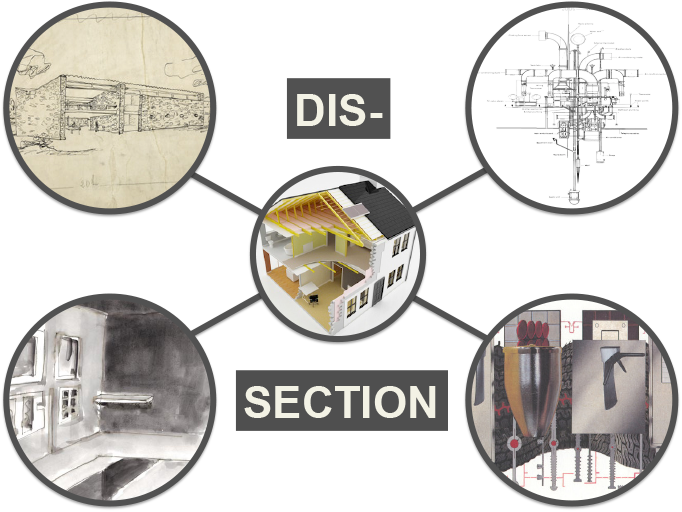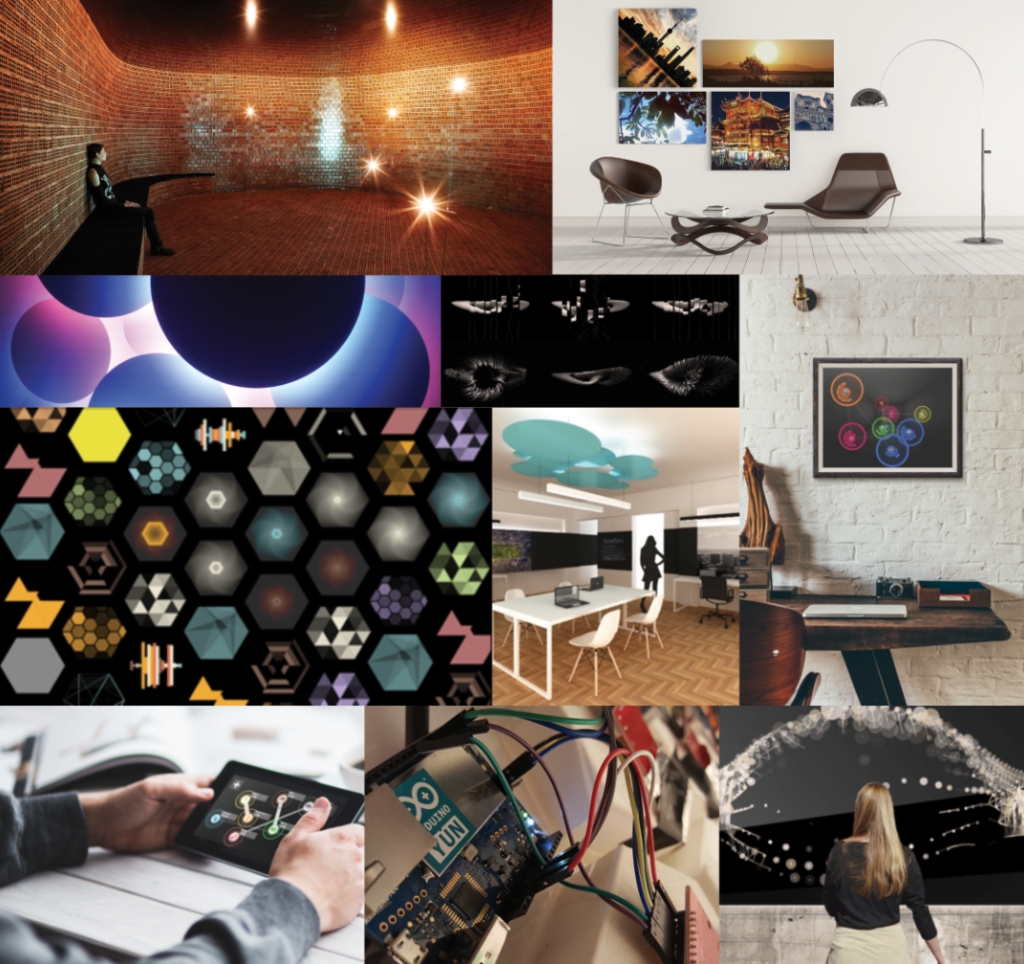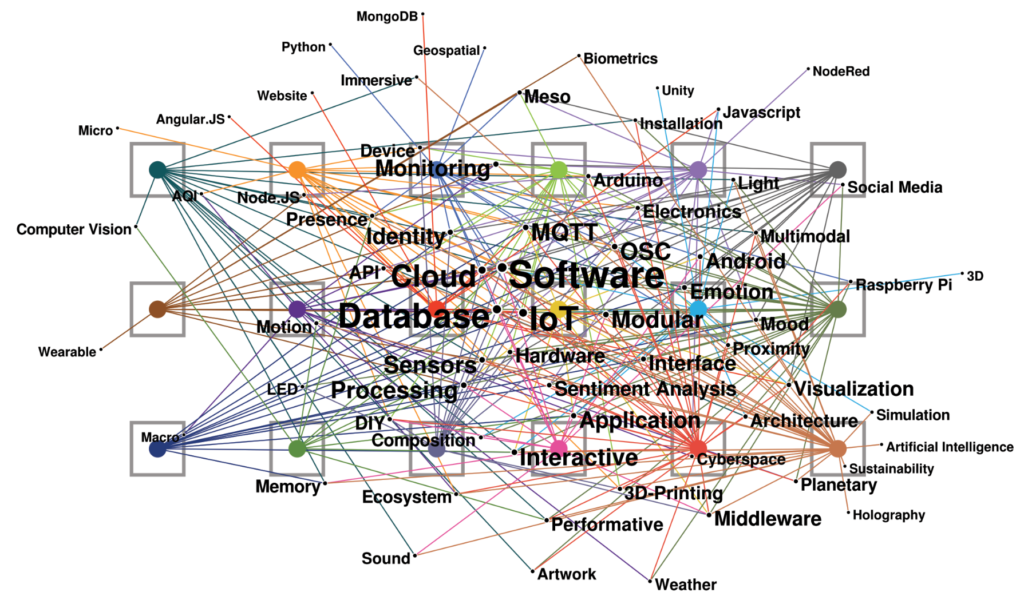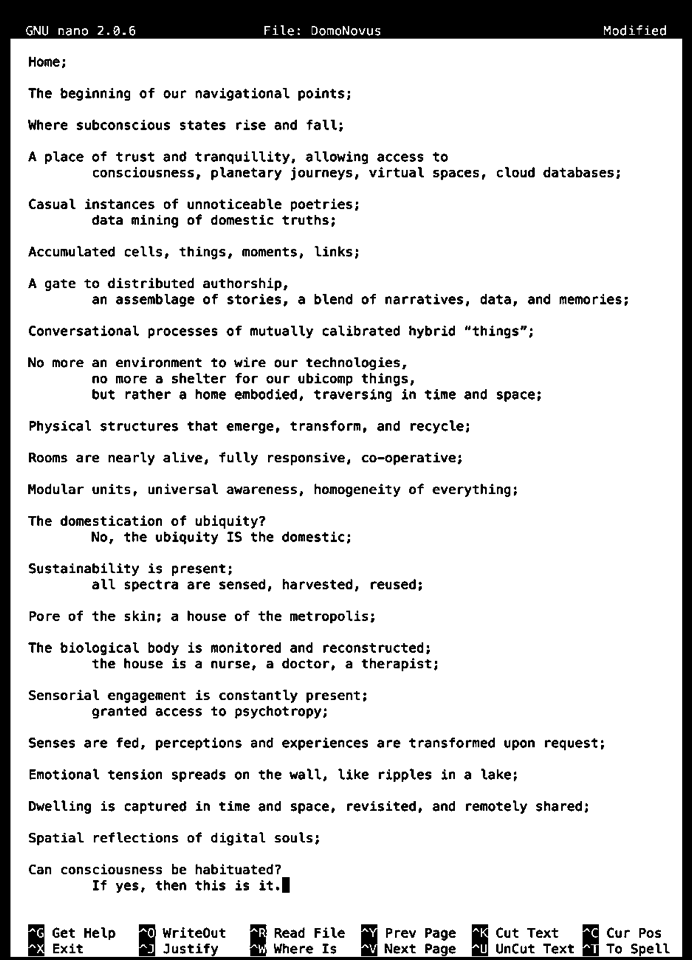In Search of the DomoNovus
Speculations on the Future of Home
The following article provides an overview of Stavros Didakis’ PhD Thesis [1] that investigates the domestication of ubiquitous computing, and how the technological multiverse affects and redefines the evolution of home (and vice versa). Through the theoretical contextualization, practice-based research methodologies have been implemented to assist the development of speculative artefacts (computational systems, interactive media, art installations), which assist in establishing fundamental concepts for alternative futures. The combined practice has led towards the development of DomoNovus, a conceptual framework that imagines a symbiotic domestic space that evolves and responds to the needs of the household, an integral part to the personal and intimate Umwelt of the inhabitant. Inspired by J.G. Ballard’s psychotropic houses [2] with their sensorial interfaces, interconnected intelligence, and architectural reflective skills, as well as the Dom-Ino structures of Le Corbusier, DomoNovus suggests a domestic space that resides on web servers and the cloud, utilising an Application Programming Interface (API) and software modules that log, analyse, facilitate, automate, predict, and propose extended and personalised support for its authorised devices (i.e. inhabitants, motors, software).
Anatomy of a Dwelling
Home has been analysed and interpreted by many scholars, theoreticians and practitioners over the years that attempt to define what home is or what it should ultimately become. Le Corbusier described home as “a machine for living in” [3] trying to express the need for functionality that collects all possible practices in design, engineering, and technology for the uttermost convenience of the inhabitant. According to Le Corbusier, the house needs to be consistent on 5 points that allow people to have important qualities within their environment, such as an open plan space, free façades, access to services, and specific aesthetic attributes. Although these suggestions have been widely accepted, Reyner Banham and Francois Dallegret in their publication “A Home is not a House” [4] provoked the status quo by stating that the essence of home exists only within the infrastructure that supports inhabitants’ needs – electrical and watering supply system, devices, radio cables, and so on. Although their suggestion has been considered an exaggeration, it is nevertheless of an absolute importance for a domestic environment to provide layers of functionality – modules, systems, and technologies are critical aspects especially within our contemporary techno-homes; to be unable to connect to the local Wi-Fi, a major part of our domestic Umwelt feels like is missing.
From a different perspective, which also contradicts Le Corbusier, is Ben Nicholson’s “Appliance House” [5] in an attempt to challenge the preconceptions related to the industrialised and mass-produced “clean” and well-designed home interiors. Nicholson uses kinetic appliances to re-construct the domestic space based on the logic implemented on his modular device – the “Kleptoman” – that searches around the house to find forgotten objects, and reposition them in areas of higher circulation. By doing this, the Kleptoman brings awareness of the unused or forgotten domestic properties and items that may reveal faded memories, demonstrating that the house is an accumulated collection of experiences and objects. Home undeniably consists of a large amount of physical, intangible, unseen, and metaphysical features that characterise its dimension, scope, and magnitude. As Martin Heidegger argues, no matter how sophisticated or skillfully designed a house may be, it does not necessarily become a home, or that dwelling is established beforehand [6]. An accumulated process of domestic time and experience builds hidden layers of meaning, affection and emotion between space and inhabitant. The architectural “object” becomes an extension of a man’s personality and psyche, providing as an exchange not only survival possibilities, but also poetic and colourful properties.

The Invisible Home
The domestic space is a complex ecosystem that contains multiple dimensions and scales not only acknowledging elements our physical senses can scan and perceive, but extending to invisible and imperceptible spectra where millions of particles, frequencies, substances, and events exist and interact. The unseen and un-captured properties of the domestic environment have a substantial impact on organic and inorganic entities (architectural structure, physical materials, biological bodies, digital information). The augmentation of technological resources within the domestic space needs to aim for the enhancement of household awareness, whilst being respectful to its dynamics and to serve as a transparent layer in the periphery. A vast array of computational systems is able to collect, sense, and identify information from the invisible space as well as the patterns extracted from the unseen choreography of the household, which generates rich information from the accumulated events that assist in constructing scientific knowing.
To rethink the home environment is not only a matter of adding gadgets and technologies that are more efficient, sustainable, or trendier, but rather it demands a larger inquiry that considers the practices of computational technologies that monitor and further utilise the home’s ecosystem accurately and in detail. It is important to be aware of the unseen cosmoses of our domestic space as they have a substantial impact on physiological and biological conditions that alter and define material and immaterial structures. It is necessary to examine the behaviour and performance of the home as a collective, including its captured properties that span on micro, meso, and macro scales. The ability to perceive the unseen environment and the hidden relationship between objects, spaces, digits, and bodies, reveals an underlying multitude of processes and a swarm of functions that re-contextualises our understanding of what a domestic habitat is – or what its form and function becomes in near futures.
Speculative Explorations
For the demands of this practice-based research, a range of speculative and prototyping artefacts have been produced that intend to explore the emergent computationally-enhanced home, and to create and define links between real, virtual, digital, and immaterial dimensions of the domestic ecology, testing their boundaries and their breaking points (in terms of the system’s equilibrium). Furthermore, these developments do not only examine how computational and technological facilitation becomes tamed and domesticated, but speculate on the alternative futures of the domestic environment through a range of multiple scales (micro, meso, macro).
The practices range from interactive installations, software and hardware developments, physical artefacts, virtual environments, custom interfaces, sensor systems, data visualisations, kinetic devices, and hybrid objects. The main goal of these case studies is to extend the sensorial dimensions of the habitat, transform the domestic space into a cybernetic system, and to observe the manifested relationships between bodies, architecture, frequencies, molecules, chemical substances, and even planetary events. Moreover, part of these investigations is to extract cyberspace activities and user-generated data that amalgamate with the interior space, challenging our preconceptions of what constitutes a personal and intimate space. Collected data from a wide range of the household’s activities, are stored, analysed, re-distributed and spatialised within the environment with the use of media (light, colour, sound, visualisations, interfaces, kinetic systems) to suggest further possibilities for interaction, customisation, and to speculate on the anticipated realities of the home.

Mapping the Practice
From the development of these conceptual and practical investigations, a range of concepts emerged that assist in framing our predictive intelligence on this subject. By mapping out selected keywords for each project that has been developed as part of this work, and a custom-made visualisation offers us a more precise understanding of the future of the home. The algorithm’s result, shown in the following image, displays each project with its assigned keywords; if a particular keyword is found in multiple projects, its font size gets bigger (i.e. Software, Database, Cloud, IoT), demonstrating how particular trends emerge and justify the reason in observing and analysing them in further detail.

A Definition of DomoNovus
According to the conceptual and practical methodologies applied here, the concept of DomoNovus emerged, that is, a design fiction that consists of a manifesto, sketches, system diagrams, and an API that frames its scope and functions. DomoNovus is purely fictional, nevertheless, and according to the previous visual map, it directly links and blends with the practices and concepts developed in this work. DomoNovus speculates and examines how the domestication of ubiquitous technologies, computational media, and scientific innovation affects and transforms the domestic environment. Through an open and imaginative exploration, trends and ideas aim to “break” the preconceptions of the domestic ecology, inviting us to consider alternative narratives.
DomoNovus suggests that the fundamental aspect for the development of a house consists of a main structural core, an Application Programming Interface, which allows the implementation of content, functions, processes, and media, to be defined and adjusted by the dwellers. The API allows inhabitants to set the role of the house and personalise it with the use of their preferred modules and units. The API and its software exist locally (in a computational unit within the domestic environment) or, more likely, in a remote server on the cloud, where all related code and databases are stored. Within this digital space, the accumulated data extracted from the environment and the inhabitants (biological information, interactions, settings and preferences, and micro, meso, and macro events) become a digital replica of the domestic Umwelt. The cloud facilitates universal access from any geographical location, establishing this ecology as a translocated and universally accessible avatar; the cloud’s I.P. is where the home is.
The invisible and remote servers now become a fundamental extension of the interior, loyally following their owners and automatically personalising when required. With location-based sensing technologies the preferences of the identified user can be used in a home’s space, no matter where its location may be. If access is granted, instant customisation based on the user’s information shapes the house accordingly, and content is directly fused into the interior – spatially mapped, personalised, and instantly configured. The main intention of DomoNovus is to illustrate a future where the house becomes a cell for symbiotic mutualism, blending personal preferences with shifted structures and algorithmic processes that facilitate a wide array of experiences and possibilities, re-synthesising the layers of the domestic space, and assisting us to comprehensively understand of the complex system we call “home”.

References:
[1] Didakis, S. (2016) In Search of the DomoNovus: Speculative Designs for the Computationally-Enhanced Domestic Environment, PhD Thesis, University of Plymouth: Plymouth
[2] Ballard, J. G. (1962) “One thousand dreams of Stellavista,” in J. G. Ballard & M. Amis (eds.) (2009) The Complete Stories of J. G. Ballard, W. W. Norton & Company Inc: New York, pp.305–20
[3] Corbusier, L. (2008) Toward an Architecture, (trans.) J. Goodman, Frances Lincoln: London
[4] Banham, R. & Dallegret, F. (1965) “A Home is not a House”, Art in America, no.2, pp.109-18
[5] Nicholson, B. (1990) Appliance House, The MIT Press: Cambridge, MA
[6] Heidegger, M. (1971) Poetry, Language Thought, HarperCollins Publishers: New York